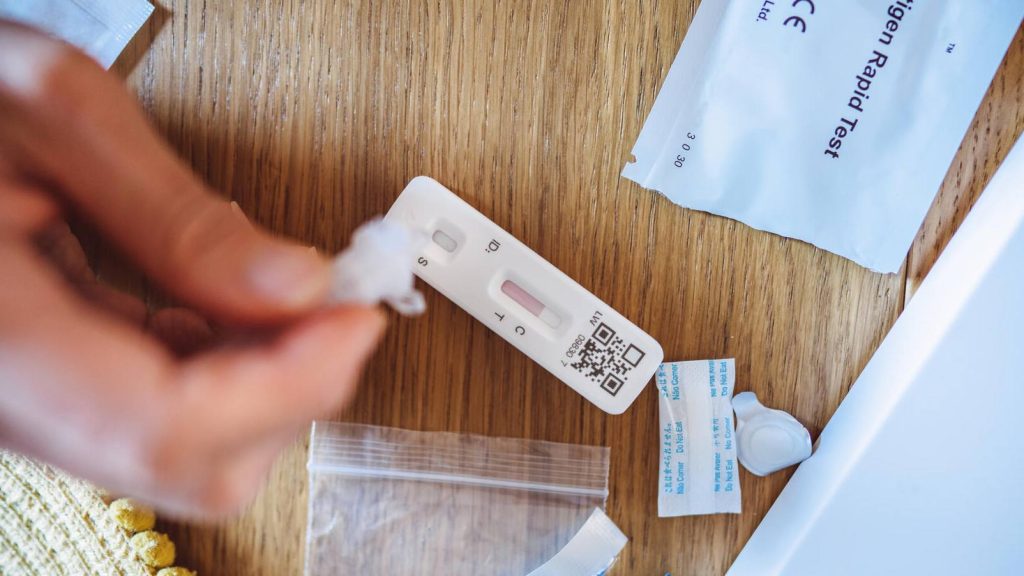
Flu cases and respiratory syncytial virus (RSV) rates are beginning to drop in the U.S.; however, reported cases of COVID-19 are increasing. A new COVID-19 omicron variant, XBB.1.5, is spreading quickly and being closely monitored, according to the Centers for Disease Control and Prevention (CDC).
"What we are learning about this new variant, XBB.1.5, is that it spreads much more easily compared to the previous variants, and almost twice more likely to spread compared to the previous variants," says Dr. Raj Palraj, an infectious diseases specialist with Mayo Clinic Health System. "Most recent data from the CDC show that more than 40% of the COVID-19 infections in the U.S. are due to this new variant."
Watch: Dr. Raj Palraj talks about COVID-19 variant XBB.1.5
Journalists: Video is available in the downloads at the end of the post. Please courtesy: Mayo Clinic News Network. Name super/CG: Raj Palraj, M.B.B.S., M.D./Infectious Diseases/Mayo Clinic Health System.
Evolving COVID-19 variants
The virus that causes COVID-19 is constantly changing and has been mutating since it first appeared three years ago. Mutations of viruses are a normal process and are expected to happen.
"This new variant makes the virus easily attached to our respiratory mucosa. It is able to attach to the nose and throat cells much better compared to the previous variants," says Dr. Palraj. "This means the virus is able to infect more people and transmit more easily."
How XBB.1.5 transmits more easily
Dr. Palraj explains how that happens.
"The COVID-19 virus attaches to our throat or the nose cells through a protein called a spike protein. And as the virus mutates, there are certain changes in the spike protein that make it easy to attach to our cells. That's why we think this is more likely to infect more people and transmit more easily. But the good news is there is no indication so far that this new variant causes more severe disease," he says.
Symptoms of infection remain similar to previous strains of COVID-19 infection: cough, runny nose, sore throat, fever and muscle ache. The CDC continues to monitor the virus to see how it changes.
Preventing infection
Dr. Palraj says, while the variant in current circulation is very new, vaccination remains an important tool against severe illness.
"What we know from the previous variant cycles is that the COVID-19 booster shot helps reduce the risk of severe pneumonia, reduces the risk of getting hospitalized and reduces the risk of death," he says. "We may not be able to prevent infection, but the odds of getting a severe disease is greatly reduced by the vaccination."
Along with vaccination, other tools to fight variants and infections include:
- Masking.
- Self-testing.
- Staying home if you have suspected or confirmed COVID-19.
- Avoid contact with people who have suspected or confirmed COVID-19.
- Practice good hand hygiene.
Dr. Palraj recommends common sense precautions. If you have symptoms or don't feel well, he says to stay home to help prevent the spread of the virus, and get tested.
Also, if you are ill and test positive, it is important to contact your health care team right away. Medications, like Paxlovid, are available for people with certain risk factors; however, they need to be taken at the beginning of infection in order to be effective.
Related posts:
- Mayo Clinic Minute: How to self-care at home when you have COVID-19
- Helpful guidelines if you test positive or negative for COVID-19.
- COVID-19, RSV and flu–season of respiratory infections.
For the safety of its patients, staff and visitors, Mayo Clinic has strict masking policies in place. Anyone shown without a mask was recorded prior to COVID-19 or recorded in an area not designated for patient care, where social distancing and other safety protocols were followed.







